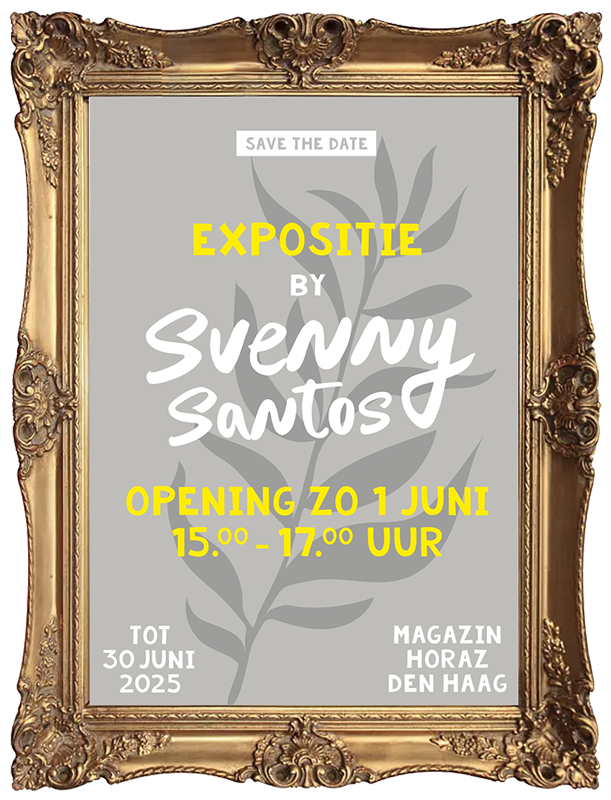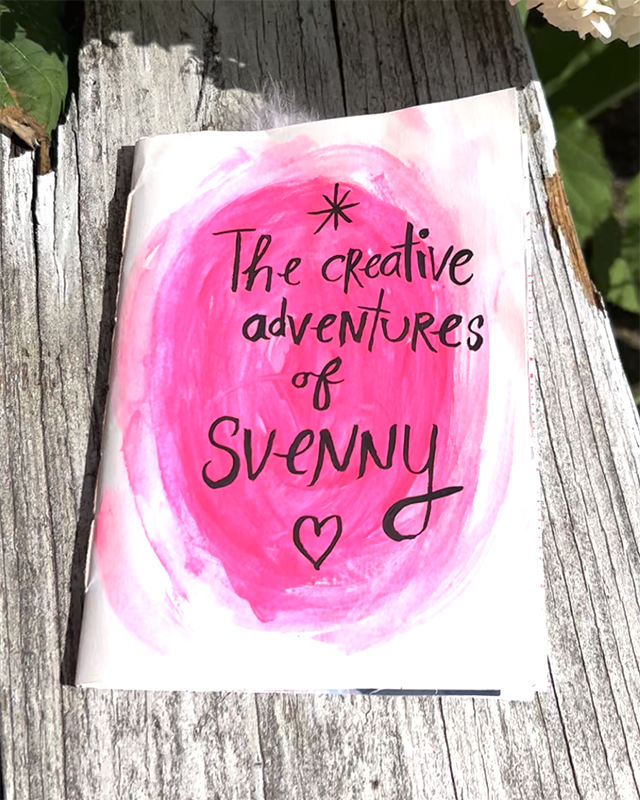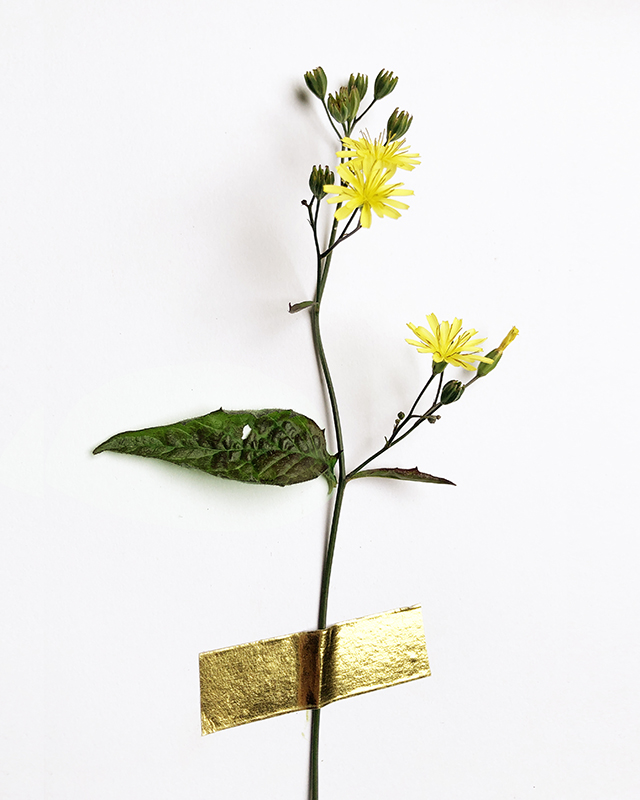
Nature holds some of the greatest masterpieces created by Mother Earth.
Shapes and colors in nature have always fascinated and inspired me. Flowers, especially, are endlessly captivating, there’s something magnetic about their extraordinary beauty. I constantly try to recreate that magic by painting and photographing them and filling my house and garden with their vibrant colors.
For me, drying flowers is a way to preserve some of their beauty. I have discovered a printing method that allows me to immortalize flowers using cyanotype. This historical photographic process allows me to capture their delicate forms on paper or fabric and create unique cyan-blue prints.
Cyanotype
Cyanotype is a printing technique that produces striking cyan-blue images. It was discovered in 1842 by English scientist John Herschel, and brought into artistic use by botanist and photographer Anna Atkins (1799–1871), who used it to document seaweed, ferns and other botanical specimens. Her cyanotype prints are among the first examples of photography used for scientific illustration. You can explore some of her prints online in the Rijksmuseum collection.

How does this technique work
By applying a special light-sensitive mixture of photochemicals (Print-Art-Read) to paper or fabric and exposing it to light, after rinsing off the chemicals a beautiful blue color is created on the exposed parts. The final result is a unique, vibrant blueprint. No two prints are ever the same.
The intensity of color and detail varies depending on the type of paper you use, the amount of chemicals you apply to it, the strength of the light source, and the exposure time, making this process as creative as it is scientific.
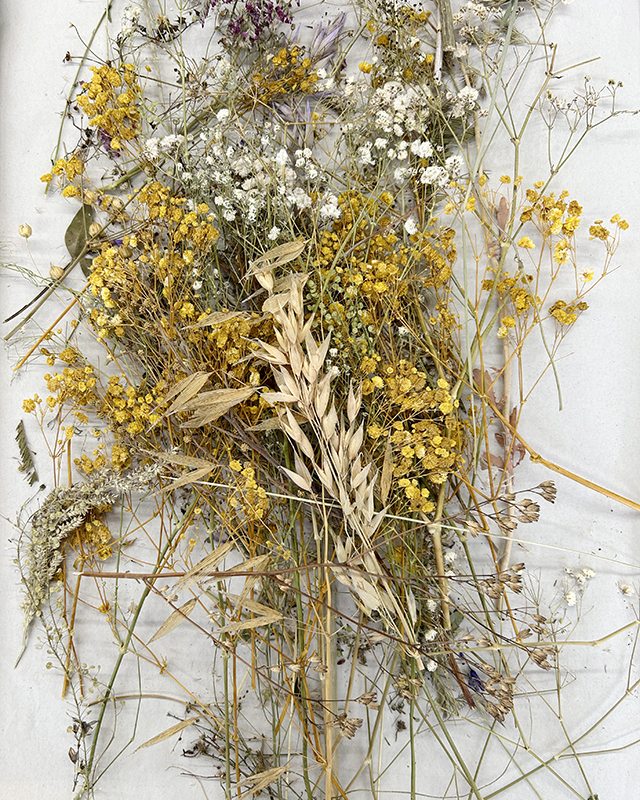
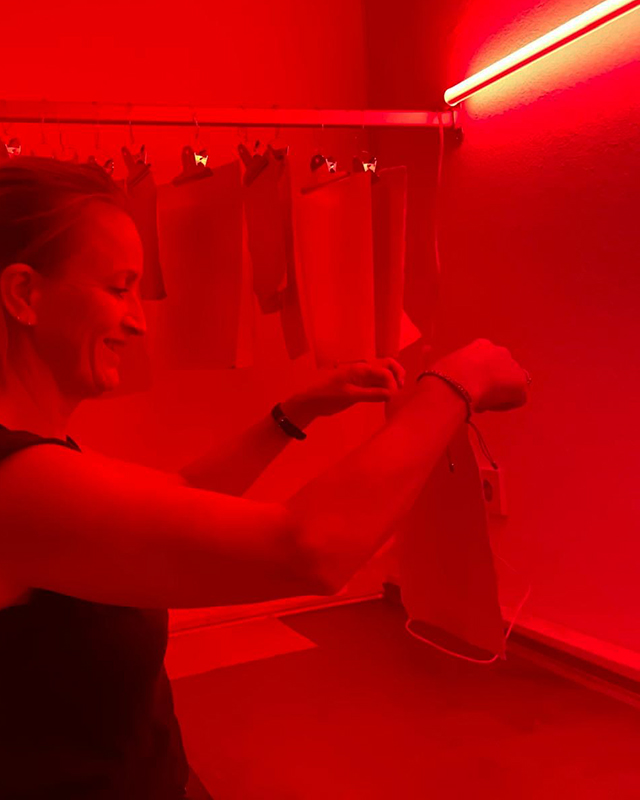
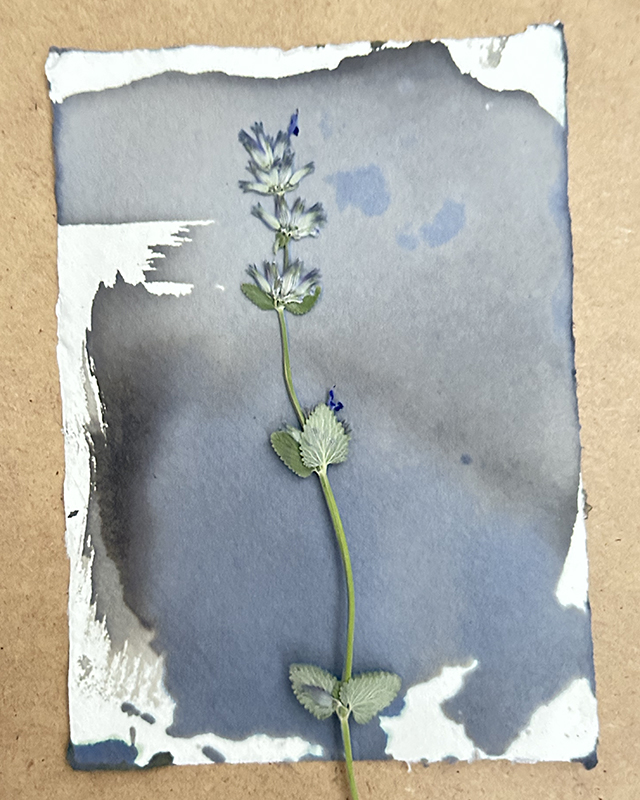
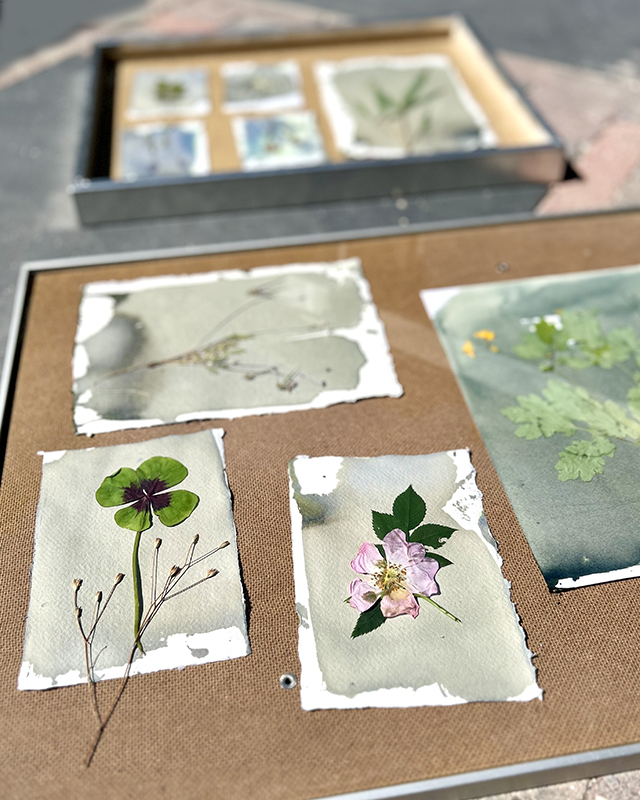
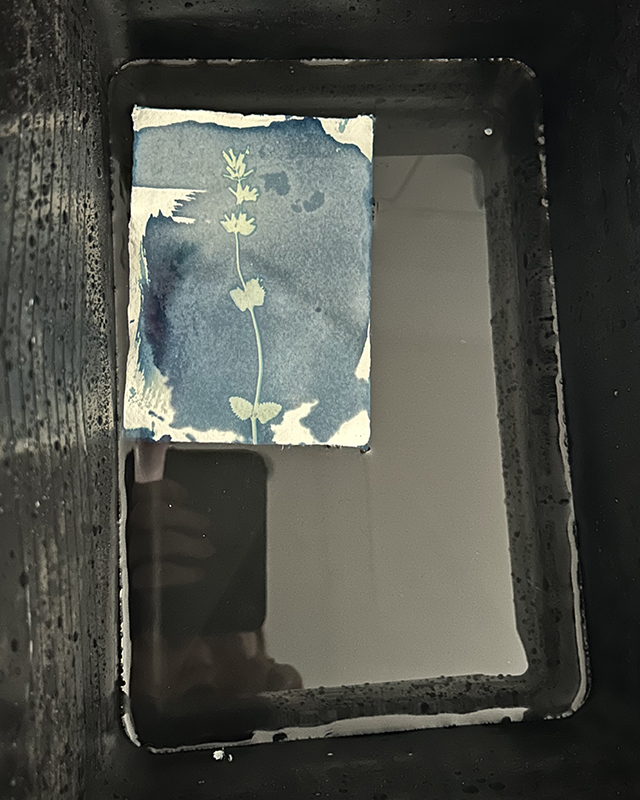
deep blue tones come to life!
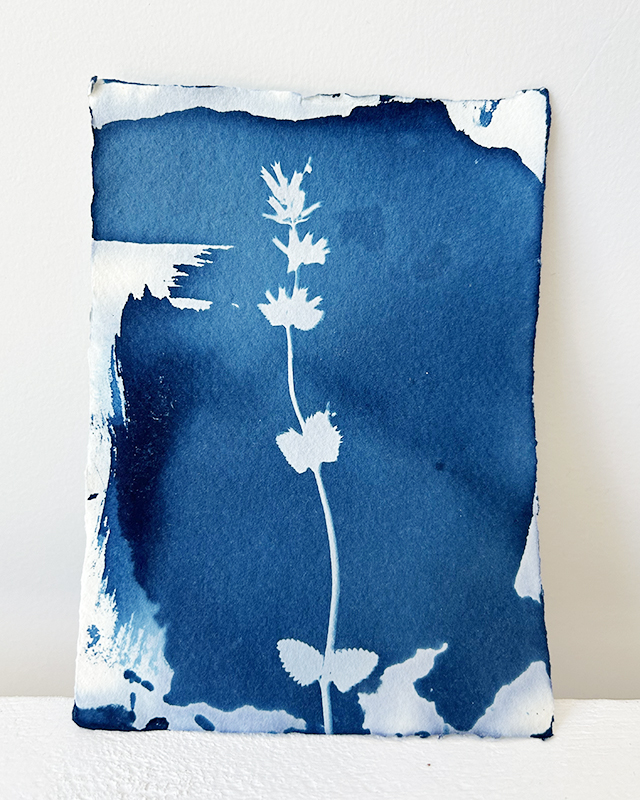
The chemicals required to make cyanotypes are not toxic. You can rinse the chemicals with water down the sink. However, it is important to be careful: wear gloves and protective clothing.
Soon to be found on this website:
My newest cyanotype artwork of flowers and lace.

